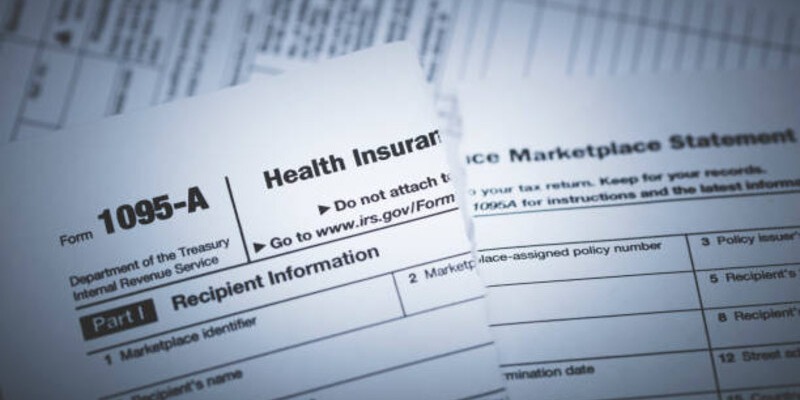

Early Access to Your Refund: Tax Refund Loans Explained for 2024
Oct 14, 2024 By Verna Wesley
Tax refund loans have become a popular financial solution for individuals seeking expedited access to their tax refunds. As the tax season approaches in 2024, understanding how these loans work can be beneficial for taxpayers who need quick funds. Essentially, a tax refund loan allows you to borrow against your expected federal tax refund. This offers the advantage of receiving funds typically within 24 to 48 hours, rather than waiting weeks for the IRS to process your return. While this can provide immediate financial relief for short-term expenses, it is crucial to understand the associated fees and potential interest rates. Being informed about the terms of tax refund loans can help you decide if this option aligns with your financial needs and circumstances, avoiding any unexpected costs.
Understanding Tax Refund Loans

Tax refund loans are essentially advances provided by lenders, often facilitated by tax preparation companies, who assess your anticipated refund amount. Once the IRS has accepted your return, these lenders are willing to issue you a loan based on the estimated refund. It's important to note that while the appeal of immediate cash is undeniable, these loans are not without their considerations. Borrowers should scrutinize the terms, especially the fine print relating to fees and interest rates that might apply. Sometimes these costs can be higher than expected, impacting the actual benefit of obtaining money quickly.
Moreover, the loan is repaid automatically once the refund is processed and forwarded to the lender, which means youll receive any remaining balance after deducting fees. By understanding these aspects, taxpayers can make an informed decision about whether a tax refund loan is a wise financial move, ensuring they manage their cash flow effectively during the tax season.
Eligibility Criteria for Tax Refund Loans
To qualify for a tax refund loan, several eligibility criteria must typically be met. First and foremost, you must have filed a federal tax return that is eligible for a refund, as the potential loan is based on the amount you are expected to receive from the IRS. Many lenders often require taxpayers to use their tax preparation services in order to apply for a refund loan, facilitating the process by having immediate access to your filed return and anticipated refund details. Additionally, some lenders may perform a credit check to assess your creditworthiness, although this requirement can vary.
It's also important that the IRS accepts your return, as this confirmation is necessary for lenders to approve the loan. Meeting these criteria ensures that you can access the expedited funds, but being aware of all conditions set by the lender is essential to avoid any surprises when managing your finances.
Process of Obtaining a Tax Refund Loan
- Choose a Reputable Tax Preparation Service: Start by selecting a trusted tax preparation service that offers tax refund loans. Research their credibility and read customer reviews to ensure reliability.
- File Your Tax Return: Complete your federal tax return through the chosen tax preparation service. Ensure that all necessary forms are filled out accurately to avoid any delays in processing.
- Apply for the Loan: Once your return is ready, express your interest in applying for a tax refund loan. Provide any additional documentation the lender may require to evaluate your application.
- Await Return Acceptance: The IRS must accept your tax return. This is a crucial step since the acceptance confirms the refund amount the loan will be based on.
- Review Loan Terms: If approved, carefully review the loan terms, interest rates, and any associated fees. Ensure you understand the repayment process and how much, if any, fees will reduce your final refund amount.
- Receive Your Loan: After accepting the terms, the lender will disburse the loan amount, usually within 24 to 48 hours, giving you quick access to funds.
- Automatic Repayment: Once the IRS processes your tax refund, it will automatically be used to repay the loan. You will then receive any remaining balance, minus the deducted fees.
By following these steps, you can efficiently access a tax refund loan and manage your financial needs during the tax season.
Common Missteps to Avoid During Application
- Ignoring Loan Fees and Interest Rates: One of the most significant mistakes borrowers make is not fully understanding the fees and interest rates associated with the loan. These costs can significantly reduce the amount of your refund, so it's vital to read the fine print and ask questions if anything seems unclear.
- Not Verifying Lender Credibility: Ensure you are working with a reputable tax preparation service or lender. Research and customer reviews can offer insights into their reliability and customer service. Falling prey to a less reputable lender can result in unfavorable loan terms and poor customer support.
- Overborrowing: It's essential to only borrow what you truly need. Overborrowing can lead to unnecessary debt and could impact your financial stability. Evaluate your immediate financial requirements carefully before determining the loan amount.
- Lack of Documentation Preparedness: Being unprepared with the required documentation can cause delays in the loan processing. Have all necessary documents, such as your filed tax return and proof of identity, ready in advance to avoid any hiccups.
- Misunderstanding Automatic Repayment Terms: Ensure you thoroughly understand how the automatic repayment works. The IRS refund will be used to repay the loan, but knowing how much of your refund will be left after deduction is key to managing your finances.
By being mindful of these potential pitfalls, taxpayers can more effectively navigate the tax refund loan process, maximizing the benefits of accessing their refund early while minimizing potential downsides.
Benefits of Tax Refund Loans in 2024

- Quick Access to Cash: Tax refund loans provide immediate access to funds without waiting for the IRS to process your return. This can be especially beneficial for those facing urgent financial needs, enabling them to handle expenses more efficiently compared to waiting weeks for a refund.
- No Credit Impact on Some Loans: Many tax refund loans do not require a credit check, meaning your credit score may not be affected by applying for the loan. This makes them accessible to a broader range of taxpayers, including those with less-than-perfect credit histories.
- Simple Application Process: Since many lenders offer tax refund loans through their tax preparation services, the application process is often streamlined. Taxpayers can file their returns and apply for a loan within the same platform, saving time and reducing complexity.
- Predictable Repayment: The repayment process is straightforwardthe loan is repaid automatically through the IRS refund. This ensures there are no surprise payments, and borrowers can easily understand the financial commitment involved.
Embracing these benefits can render tax refund loans a practical solution for managing financial demands during the tax season, particularly in urgent circumstances where waiting for a traditional refund may not be feasible.
Considerations and Risks
- Interest Rates and Fees: While tax refund loans offer speed and convenience, they often come with higher interest rates and fees compared to traditional loans. It's crucial to weigh these costs against the urgency of your financial needs to determine if a tax refund loan is the right option.
- Potential Scams: Be aware of fraudulent services posing as legitimate lenders. Taxpayers should verify the lender's credentials and ensure they are working with a reputable company to avoid scams that can lead to identity theft or loss of funds.
- Delay in IRS Processing: If there is any delay with the IRS processing your tax return or refund, it could affect the terms and timing of your loan. Being prepared for potential delays and understanding how they might impact loan repayment is essential.
- Limited Recourse: In some agreements, borrowers have limited options for disputing if the refund amount differs from the lender's estimate. Ensure you understand how discrepancies will be handled before accepting the loan.
- Dependency on Tax Refunds: Relying heavily on tax refund loans might develop into a cycle of dependency, impacting long-term financial health. Consideration of alternative financial planning strategies, such as emergency funds, is advised to avoid reliance on these loans.
Conclusion
Tax refund loans can serve as a convenient financial tool for individuals needing immediate cash during the tax season. They offer the advantage of quick access to funds and a straightforward repayment process, often without impacting credit scores. However, it is essential to carefully evaluate the associated costs, such as interest rates and fees, and consider potential risks like scams and delayed IRS processing. By ensuring lender credibility and understanding the loan terms, taxpayers can effectively leverage tax refund loans while mitigating downsides.
-
 Investment Nov 03, 2024
Investment Nov 03, 2024Understanding Nigeria's Excess Crude Account: The Ups and Downs of a Fiscal Cushion
Discover the role and challenges of Nigeria's Excess Crude Account, a critical fiscal tool designed to stabilize the country's economy amid volatile oil prices. Learn why its depletion matters in 2024
-
 Investment Jan 07, 2024
Investment Jan 07, 2024Unraveling Form 1095-B: Health Coverage - What it is and How it Works
Learn all about Form 1095-B: Health Coverage. Understand what it is, how it works, and how it impacts your tax filing.
-
 Taxes Nov 21, 2023
Taxes Nov 21, 2023Property Tax Exemptions: Do You Qualify?
Find out if you qualify for property tax exemptions and learn how to save on real estate taxes. Learn all the necessary information about it in this read.
-
 Taxes Dec 24, 2023
Taxes Dec 24, 2023Here Are 4 Indications Your Tax Bill Will Be Higher Than Expected
Keep in mind that you may always use money from a "rainy day" fund to pay any taxes you may owe. Don't stress if you can't come up with the money to pay your bills on time. If you follow these instructions, you should have an easier time doing it